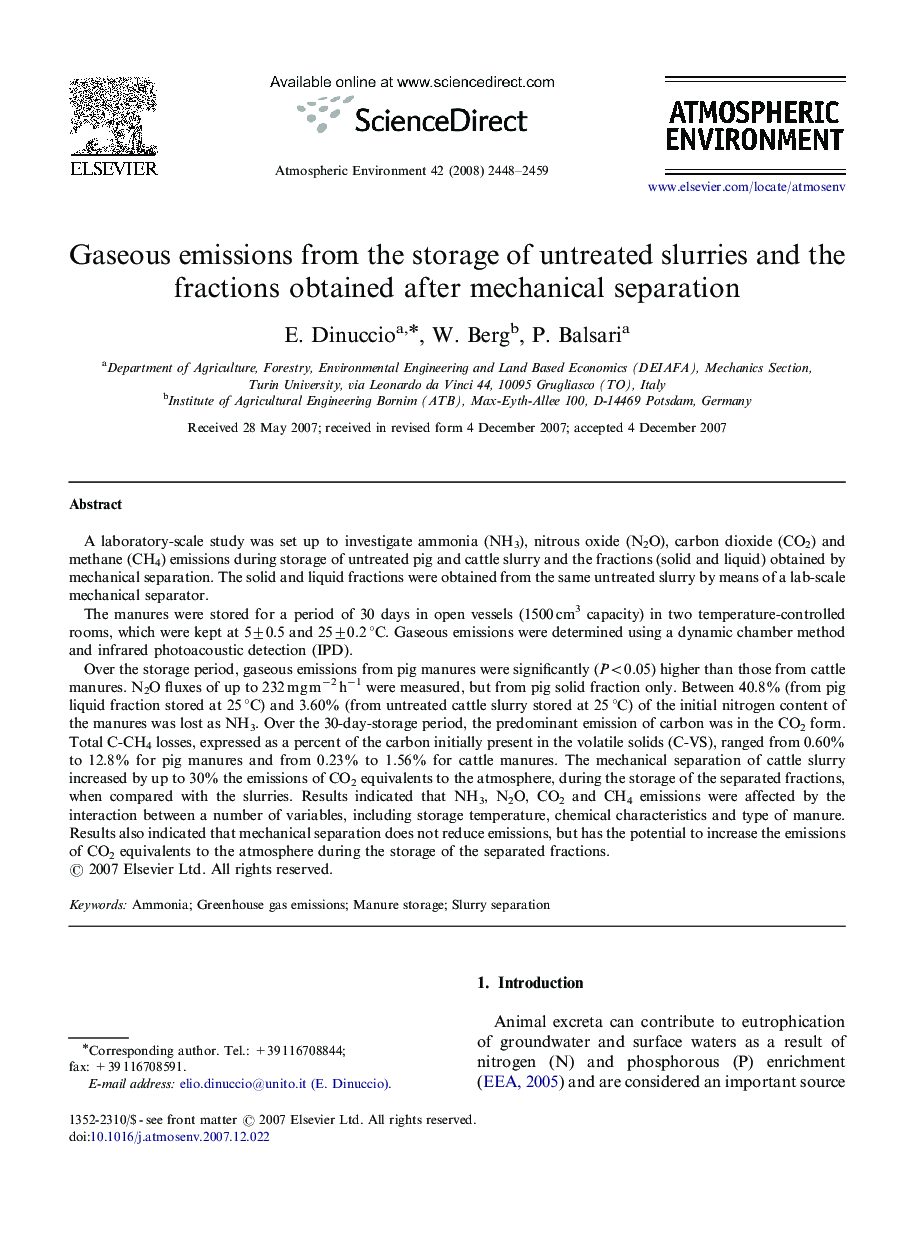| کد مقاله | کد نشریه | سال انتشار | مقاله انگلیسی | نسخه تمام متن |
|---|---|---|---|---|
| 4442506 | 1311154 | 2008 | 12 صفحه PDF | دانلود رایگان |

A laboratory-scale study was set up to investigate ammonia (NH3), nitrous oxide (N2O), carbon dioxide (CO2) and methane (CH4) emissions during storage of untreated pig and cattle slurry and the fractions (solid and liquid) obtained by mechanical separation. The solid and liquid fractions were obtained from the same untreated slurry by means of a lab-scale mechanical separator.The manures were stored for a period of 30 days in open vessels (1500 cm3 capacity) in two temperature-controlled rooms, which were kept at 5±0.5 and 25±0.2 °C. Gaseous emissions were determined using a dynamic chamber method and infrared photoacoustic detection (IPD).Over the storage period, gaseous emissions from pig manures were significantly (P<0.05) higher than those from cattle manures. N2O fluxes of up to 232 mg m−2 h−1 were measured, but from pig solid fraction only. Between 40.8% (from pig liquid fraction stored at 25 °C) and 3.60% (from untreated cattle slurry stored at 25 °C) of the initial nitrogen content of the manures was lost as NH3. Over the 30-day-storage period, the predominant emission of carbon was in the CO2 form. Total C-CH4 losses, expressed as a percent of the carbon initially present in the volatile solids (C-VS), ranged from 0.60% to 12.8% for pig manures and from 0.23% to 1.56% for cattle manures. The mechanical separation of cattle slurry increased by up to 30% the emissions of CO2 equivalents to the atmosphere, during the storage of the separated fractions, when compared with the slurries. Results indicated that NH3, N2O, CO2 and CH4 emissions were affected by the interaction between a number of variables, including storage temperature, chemical characteristics and type of manure. Results also indicated that mechanical separation does not reduce emissions, but has the potential to increase the emissions of CO2 equivalents to the atmosphere during the storage of the separated fractions.
Journal: Atmospheric Environment - Volume 42, Issue 10, March 2008, Pages 2448–2459